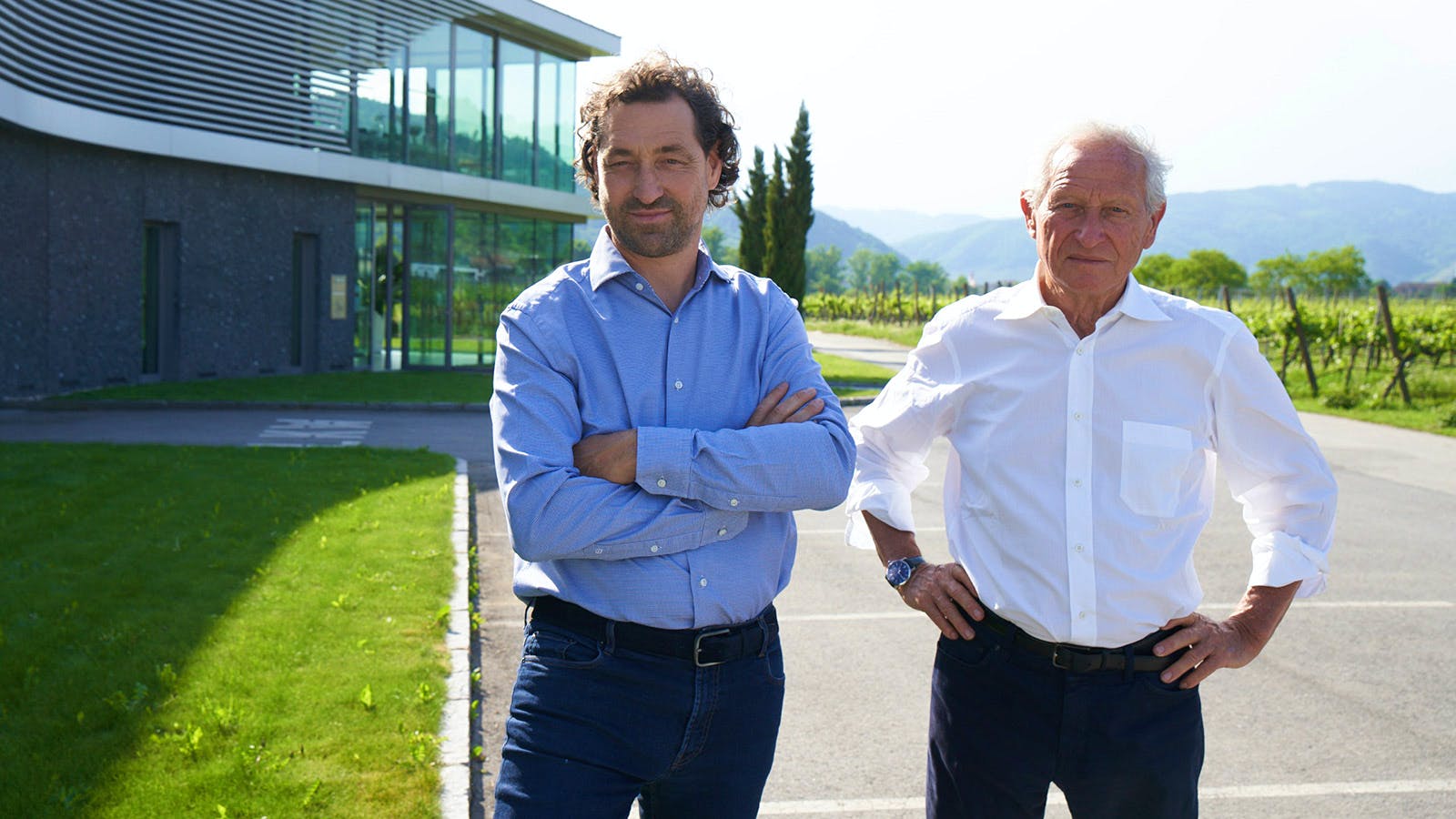
In a sign of Austrian wine evolving with the climate, F.X. Pichler, one of the leading wineries in the Wachau region, is quitting the winemaker association Vinea Wachau Nobilis Districtus. The winery will no longer use the association’s designated classification categories for dry white wines by ripeness, such as Steinfeder, Federspiel and Smaragd, starting with the 2020 vintage.
Lucas Pichler, currently in charge of the estate, made the decision with his father, Franz Xaver Pichler. He felt that Vinea Wachau should have been updating its rules now that the Austrian government has approved the Districtus Austriae Controllatus (DAC) system for use in the Wachau as of the 2020 vintage.
The DAC regulations, introduced elsewhere in Austria beginning in the early 2000s, are similar in principle to France’s Appellation d’Origine Contrôlée (AOC) system, rather than Vinea Wachau’s focus on defining wine styles by ripeness levels. The DAC structure consists of three tiers: Gebietswein (regional wine), Ortswein (“village” wine) and Riedenwein (single-vineyard wine).
“The introduction of the DAC regulations would have been the right moment to revise the Vinea guidelines—such as a limit on the descriptor Smaragd to the finest sites or the elimination of the ‘sugar’ categories, which global warming has made obsolete anyways,” said Pichler.
Stay on top of important wine stories with Wine Spectator’s free Breaking News Alerts.
Pichler explained that back in the 1980s, production of Smaragd wine was only possible in warm years and the best sites, as grapes would struggle to get ripe. Today, it is harder to produce Steinfeder, the lowest category in Wachau‘s ripeness classification of white wines, made from the least-ripe grapes with a mandated maximum alcohol level of 11.5 percent. Smaragd-designated wines are made from the ripest grapes in the Wachau, with a mandated minimum alcohol level of 12.5 percent. Global warming means more wines are meeting that threshold. “Now, after 37 years, you can produce a Smaragd wine in every vineyard and every year, so for us, it makes no sense anymore to name our wines Smaragd,” said Pichler.
F.X. Pichler was one of the original members of Vinea Wachau when the association was founded back in 1983, together with renowned producers Franz Hirtzberger, Prager, Jamek, Domäne Wachau and Knoll. Soon thereafter, the group introduced the Steinfeder, Federspiel and Smaragd trademarks. But Pichler has always focused on showing the terroir through its wines. “We want to show with our wines the terroir in our best vineyards, no matter how high the sugar level is when we reach the physiological ripeness,” said Pichler.
This decision comes as no surprise considering global warming and the shift in style. This is especially true when one looks at Austria’s neighbor, Germany. Here, more and more producers are adopting the “French system” introduced by the VDP (Verband Deutscher Prädikats- und Qualitätsweingüter), which focuses on terroir and specific sites, and dropping the Prädikatswein system, which focuses on ripeness levels. Pichler believes that the weather and the vineyard will determine which wine style will be produced, “like in Germany and maybe also in Burgundy.”